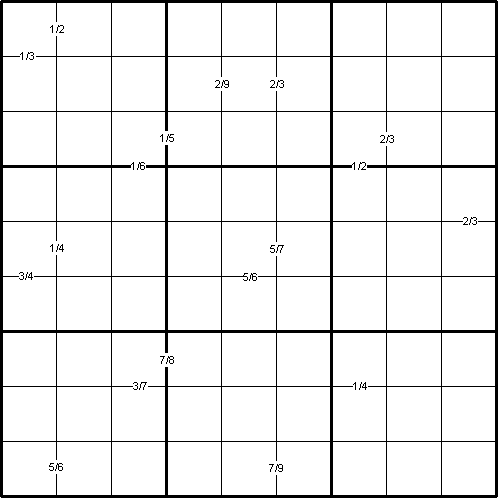Copyright © University of Cambridge. All rights reserved.
'Ratio Sudoku 2' printed from https://nrich.maths.org/
Show menu
by Henry Kwok

Rules for Ratio Sudoku
The small clue-numbers in this Sudoku puzzle are fractions or
ratios in the lowest terms. The clue-numbers are always placed on
the border lines between selected pairs of neighbouring cells of
the grid. Each clue-number on a vertical border line or horizontal
border line is the fraction of the two numbers in the horizontally
connecting cells or vertically connecting cells respectively.
Each fraction is written in its lowest terms, with the smaller
number denoted as the numerator. Thus 1/2 can stand for the
following combinations of numbers in the two adjacent cells: 1 and
2, 2 and 1, 2 and 4, 4 and 2, 3 and 6, 6 and 3, 4 and 8, 8 and
4.
So if the answers in the two adjacent cells of a puzzle are
actually 7 and 5, the clue-number will be written in the form 5/7
rather than 7/5, otherwise this would give away the answer and the
puzzle would be too easy to solve!
The remaining rules are as in a "standard" Sudoku, and the
object of the puzzle is to fill in the whole 9x9 grid with numbers
from 1 to 9 (one number per cell) so that each horizontal line,
each vertical line, and each of the nine 3x3 squares (outlined with
the bold lines) must contain all the nine different numbers 1 to
9.